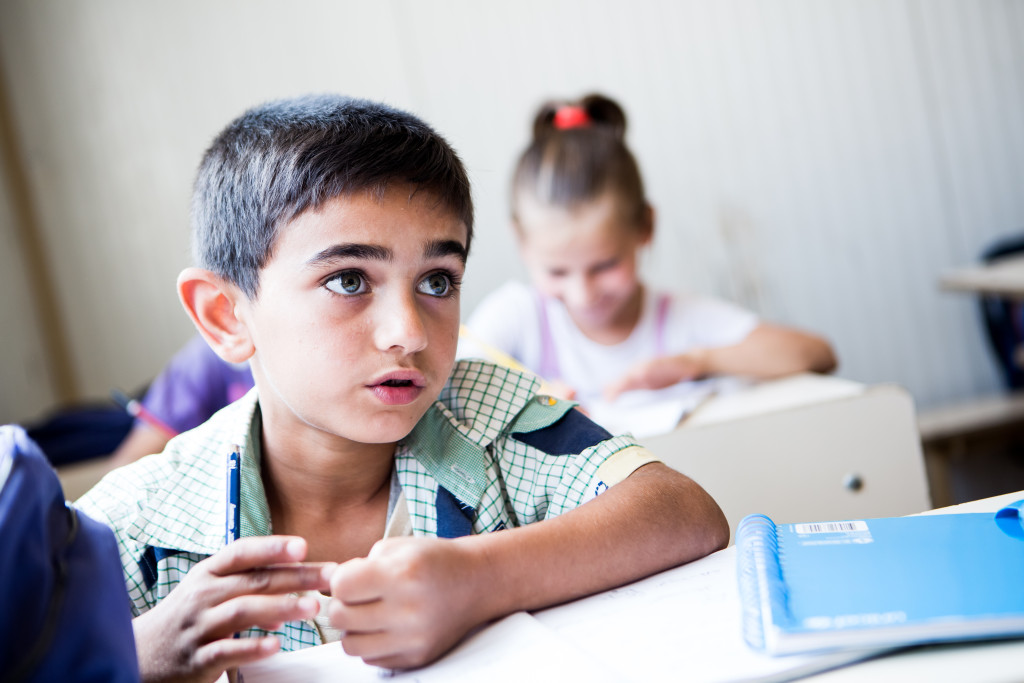Conflict and totalitarianism have plagued Iraq for decades. This has had a negative impact upon the Iraqi education system in many ways.
Here are the Top 10 Facts about Education in Iraq
- UNICEF has helped massively. To start on a positive note, although education in Iraq is dreary, help has not been avoided by international players in the arena of helping the impoverished. UNICEF has been instrumental in Iraq for various improvements, such as building schools, fixing water/sanitation systems in already existing schools, helping train over 50,000 teachers in child-friendly manners and supplying millions of Iraqi children with vital school materials, among many other positive upward aiming changes. In 2016, UNICEF helped an estimated 682,000 children access education in Iraq.
- The ongoing conflict has diminished education attendance. Since the end of the 2003 U.S. invasion of Iraq, Iraq has been in constant conflict. What emerged following that war was a civil war between Sunnis and Shias and a burst of jihadist insurgencies. This has ultimately interfered with education in Iraq. Attendance is low with 3.5 Iraqi children either not attending school regularly or not at all.
- ISIS’ presence in Iraq has damaged the Iraqi education system. Prior to being pushed out of its last Iraqi stronghold in Mosul, ISIS ran rampant in Iraq and created several consequences. On top of terrorizing Iraqi citizens, ISIS negatively influenced the Iraqi education system greatly. When ISIS had control in Iraq, they either closed schools and used them as safe houses or they took schools over completely and began teaching a curriculum of radicalization. Parents were forced to send children to these schools under the threat of death. This resulted in one out of every five schools being out of use.
- The expulsion of ISIS from Iraq has left work to be done. There is a lot of work to be done following the expulsion of ISIS from Iraq. The closure of many schools due to ISIS’ presence left many children out of school for two years, thus creating a need for these children to catch up educationally. UNICEF has helped in this regard by attending to the effort of rebuilding schools in the wake of their destruction.
- The Iraqi government has a low education expenditure. Following Iraq’s liberation from ISIS, more than three hundred thousand children have returned to school with a high level of enthusiasm. Despite this, the Iraqi government is not doing its part in regards to making education more attainable for more people. In the 2015-16 school year, only 5.7 percent of Iraq’s government expenditure went to education. This has led to half of Iraq’s displaced children being out of school, thus creating a $1 billion loss in potential wages.
- Military spending has historically detracted from educational spending. The Iraqi government allocates little of its resources towards education. This was not always the case and is largely accounted for in allocating more resources towards the military to combat ongoing conflicts. For example, following The Gulf War, 90 percent of educational spending dropped in Iraq. Attendance at school has always been high in Iraq as primary education was compulsory until the U.S. invasion in 2003. After the conflict in 2003, only one in six children had textbooks, school facilities were in poor condition, there was a shortage of supplies and equipment and the quality of education was in serious decline.
- An over-emphasis on religious teaching is causing conflict within the population. In 2008, a new education system was established in Iraq that instilled a philosophy of education centered on Islamic education. “The main objectives are: enhancing the pupils’ faith in God and His divine messages and their feeling of need for the religious faith; inform the pupils of the pillars of Islam and faith among other objectives.” In the Iraqi public educational system, there is not an equal distribution of religious education, in that, Islamic education is emphasized and religious minorities are not permitted to learn their own religions. This causes religious minorities to feel educationally inferior, as they are not permitted to be educated on their own faith. Prior to the 2003 invasion and the toppling of the Ba’ath regime, such educational religious intolerance was non-existent.
- Education for girls in Iraq is far from adequate. Culturally, female education is frowned upon; instead, females are seen as a means to an end, the end being marriage (often arranged). Girls have an illiteracy rate that is twice as high as boys in Iraq. The majority of the over 355,000 children not attending school are girls.
- External efforts are being made to improve the situation. Aside from the aforementioned help that UNICEF has contributed, other organizations have contributed massively to the effort of bringing quality education into Iraq. The United Nations Educational, Scientific, and Cultural Organization (UNESCO) has contributed to the Education For All (EFA) policy in Iraq. This entails the promotion of the modernization and social improvement of schools to help Iraqi schools to have a positive long-term impact on Iraq’s development.
- What more can be done? There are various organizations dedicated to improving education in Iraq. The Iraqi Children’s Relief Fund is a highly certified organization dedicated to ensuring a higher quality of life for Iraqi children, which includes promoting better quality education. Donating to organizations such as The Borgen Project will ensure informative articles will continue to be published to spread awareness of the problems of global issues, like that of education in Iraq.
Education in Iraq has not always been problematic. Respective conflicts and moments of peace have created a void that had left the education system demolished by conflict. With organizations like UNICEF and UNESCO on the ground, the goal is to return Iraq to where it was during The Islamic Golden Age when Baghdad was the epicenter of global intellectualism. Much work is to be done to bring education back to its former glory.
– Daniel Lehewych
Read original article.
